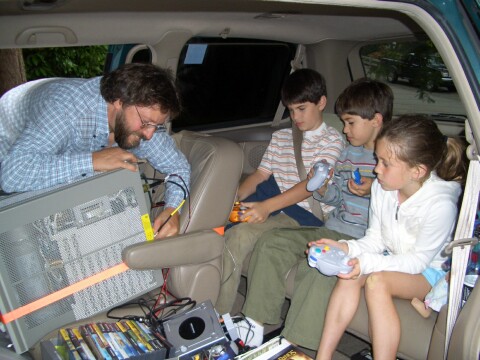
Dad makes final connections to the clocks. It took about half an hour to bring all the equipment down from the upstairs lab out to the car.
The kids took the back seat.
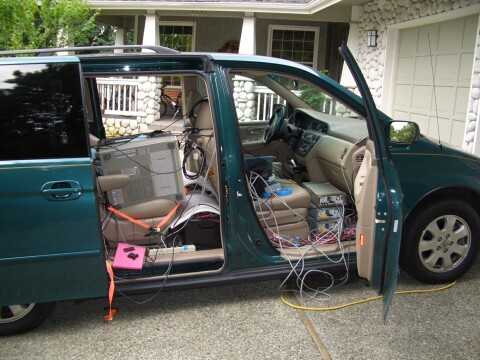
Here's a view of the car. What a mess. The three clocks fit on a middle seat in the van.
The front seat area is where I put the counters, laptop, inverters, power monitors, environmental sensors.
It comes to 400 pounds of batteries; 200 pounds of clocks.
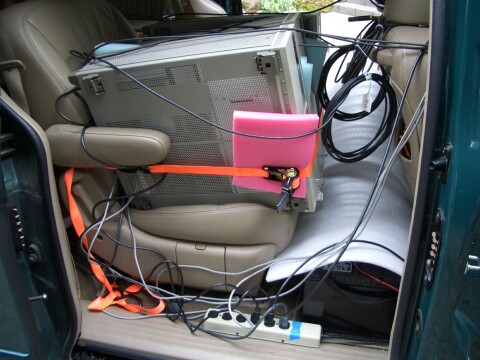
The power strip provides 120V AC from DC inverters to the clocks. The clocks also had 24 VDC backup power, as well as internal batteries in each cesium clock.
This NASA-like triple redundancy is to make sure the clocks don't stop.
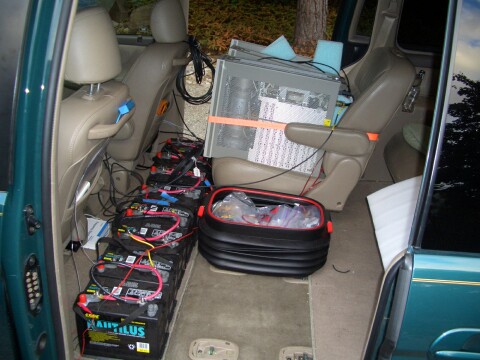
I called them bus A and bus B. I monitored both of them and secretly hoped to also experience a "Main B bus undervolt" (as in Apollo 13). But, no, there were no AC or DC power problems.
The 12 VDC bus is used for the two AC inverters. Next time I will use pure sine wave inverters. The 5071A sing with modified sine waves.
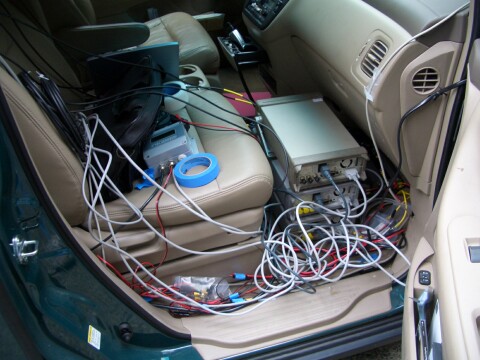
You can also see the red/black 12 VDC power lines coming from the engine (alternator) and going to the back seat (battery bank)
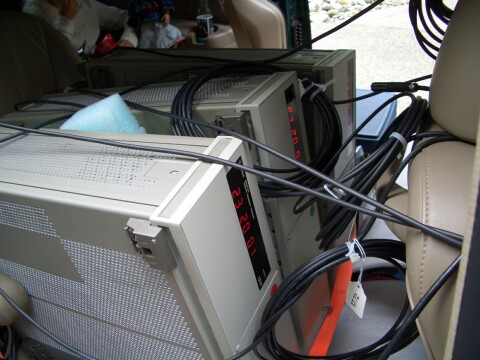
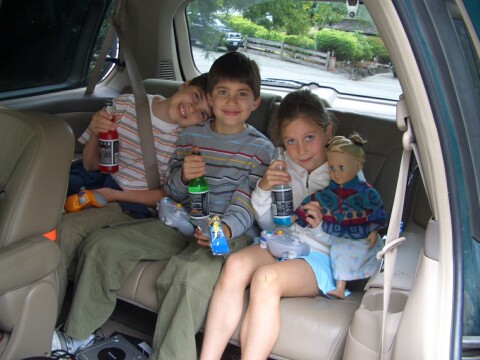
As a special treat the kids got Jones Sodas at the beginning of the trip; you guess it - fufu berry red, apple green, and bubble gum blue.
Those of you with more than one child will understand why the success of a long road trip depends on equality. Three kids, three clocks, three sodas.
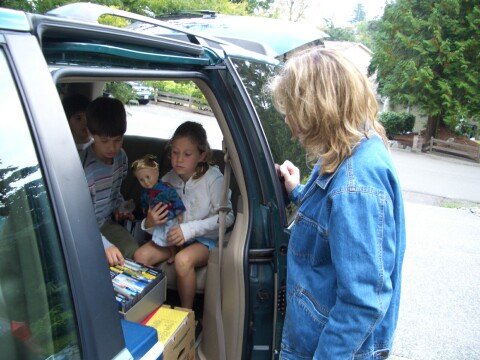
We would come back about 20 ns older compared to her.
Or, the other way to look at it (since this is relativity after all), is that she would become 20 ns younger than us upon our return. Note to husbands: this could be a useful gift idea for your wife.
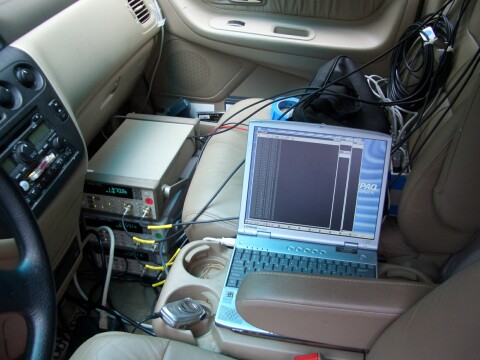
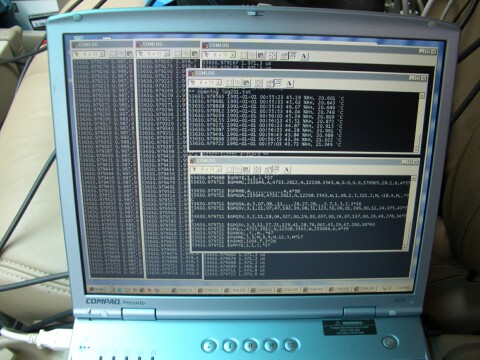
Three ports were used to periodically log the 5071A status page (the SYST:PRINT? command)
Three ports were used to capture the 1 Hz pair-wise phase readings of the clocks.
One port was used to log the HMP sensor.
One port was used to log the Garmin NMEA GPS data stream.
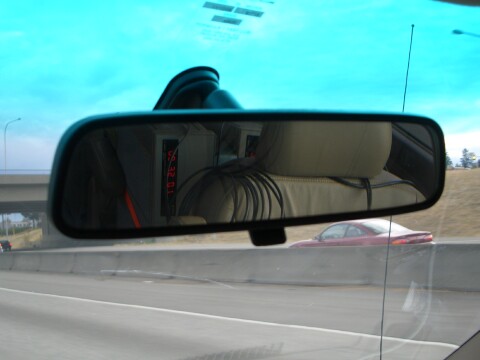
Keeping an eye on the clocks as we drove.
It turns out there were no issues with vibration or shifting.
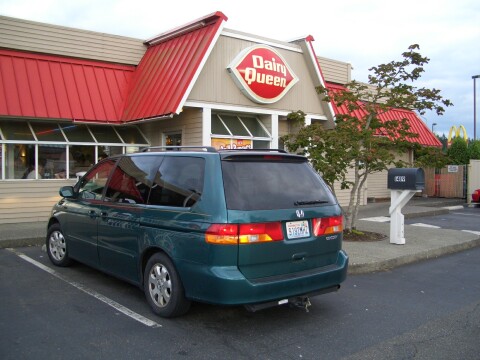
There wasn't a big hurry to get up to Mt Rainier; we were on vacation. But we got a late start and every hour spent at low altitude meant one less hour spent at high altitude.
I figured the clocks would see about 1/2 nanosecond of time dilation for every hour up on the mountain.
So this 10 minute stop at DQ cost me $8 and 83 picoseconds.
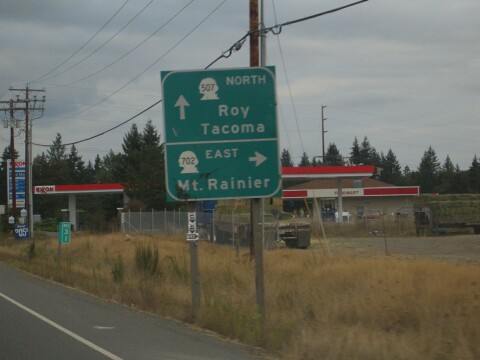
Days later I realized there was a shorter route to the mountain. But in all the excitement to get the mobile time lab rolling I forgot to check the map for optimum route.
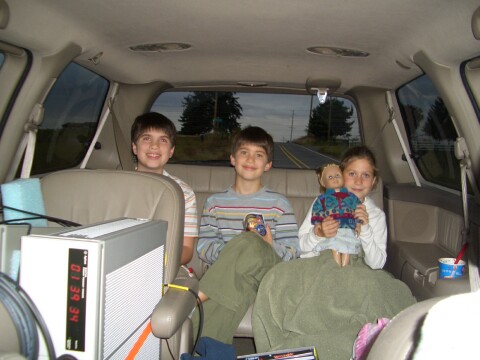

As evening began, we filled up at the last gas station before the final road into the park and the twisting road up the mountain.
By this point in the trip I was considering keeping all the clocks running in the van all weekend instead of carrying yet again all the heavy gear up to the hotel room. So I figured filling up was prudent.
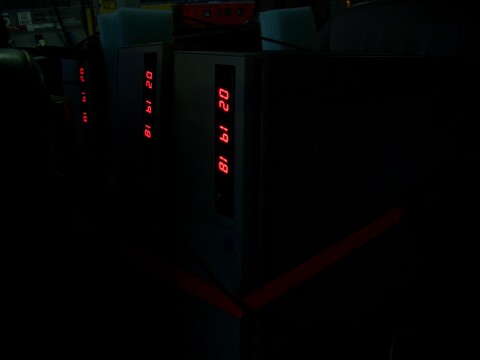
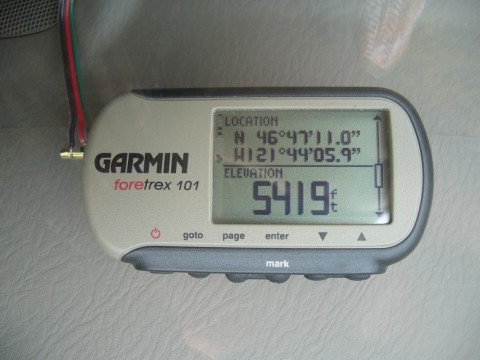
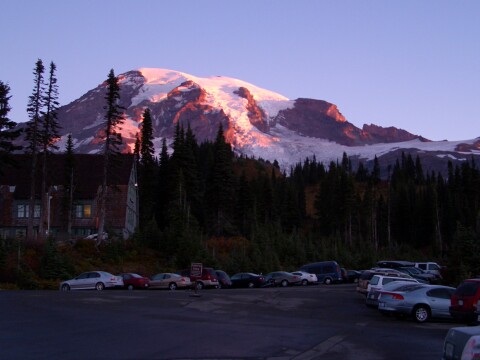
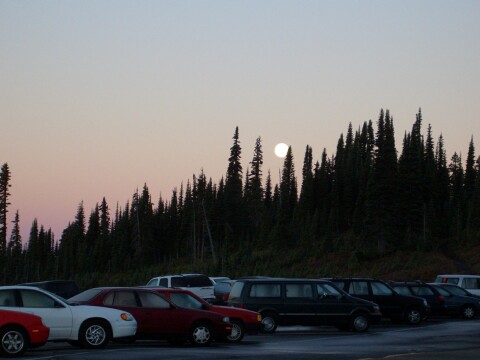
The moon has a 28 day cycle (27.32166155 to be more exact). That comes out to 4.236e-7 Hz.
A time to reflect on the contrast between using a 28-day lunar cycle and a 9 192 631 770 Hz Cesium resonance to keep track of time.
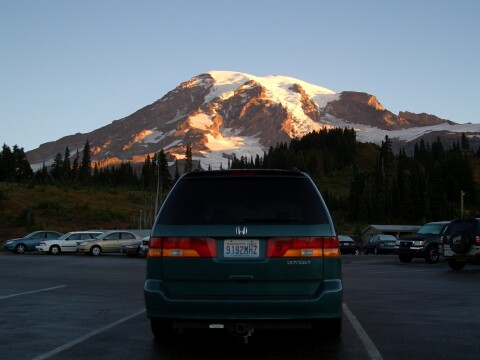
That's 9192 MHz
Compare that to the moon's 423 nHz.
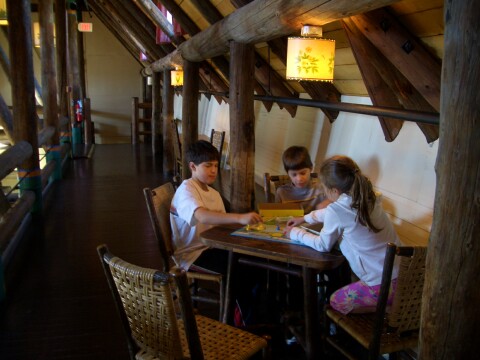
We had a lot of time to kill while waiting for the clocks to do their thing.
Waiting as cesium clocks undergo time dilation is much worse than watching a kettle boil.
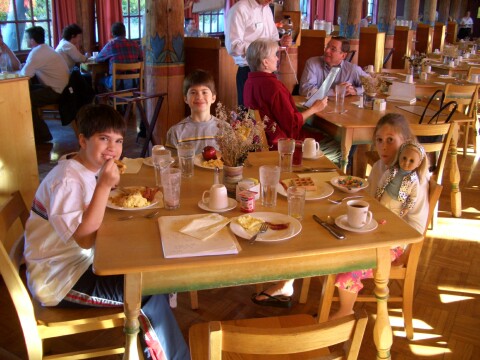
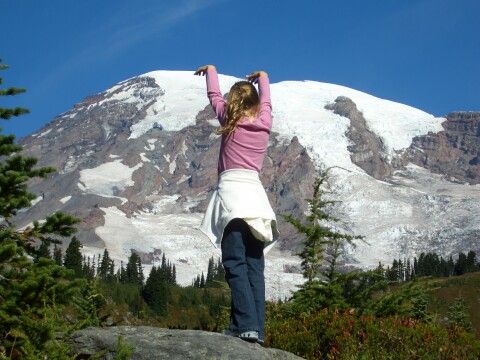
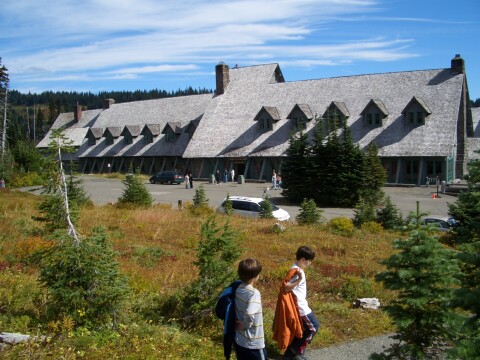
You can see our green van parked in front.
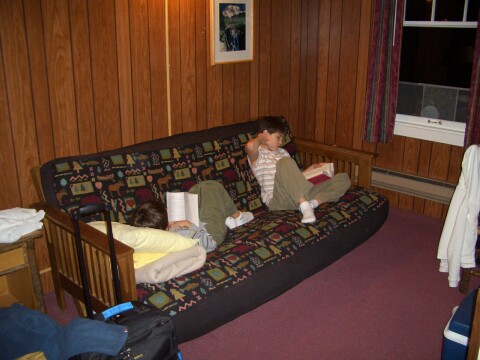
While the kids counted pages I counted picoseconds.
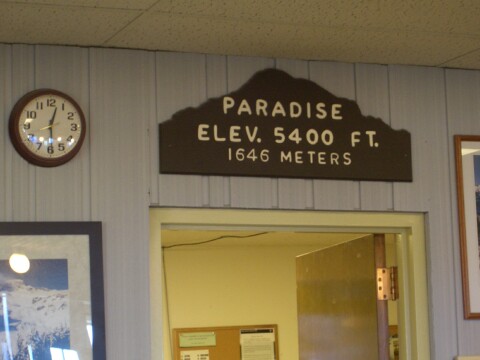
A visit to the ranger station.
You know, the whole experiment could be done in reverse. By measuring the time dilation in nanoseconds one can later determine elevation by solving for h.
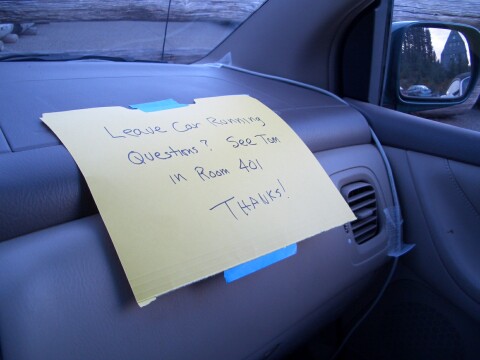
For an hour once I forgot to lock the car. I came out later to find it locked and not running. Turns out a hotel employee who couldn't read turned the car off and took the keys to the front desk.
All the backup systems worked and the clock didn't miss a beat.
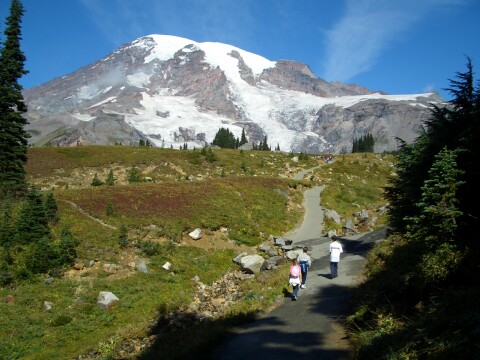
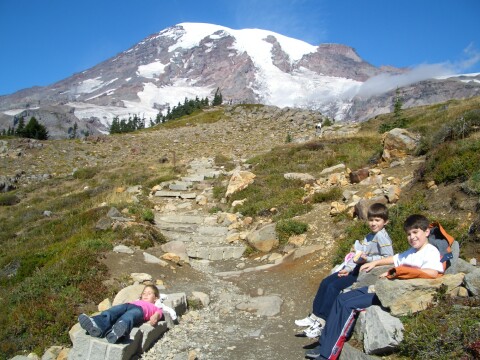
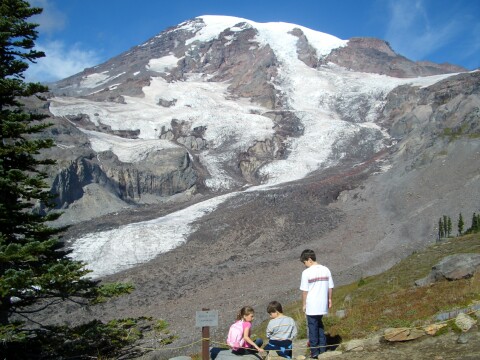
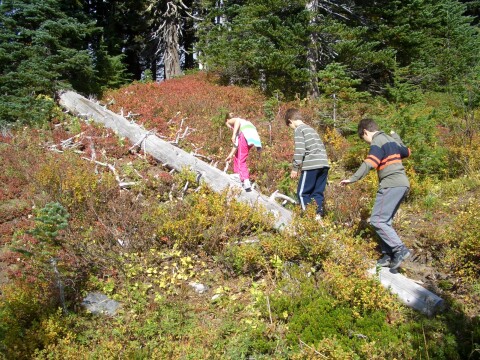
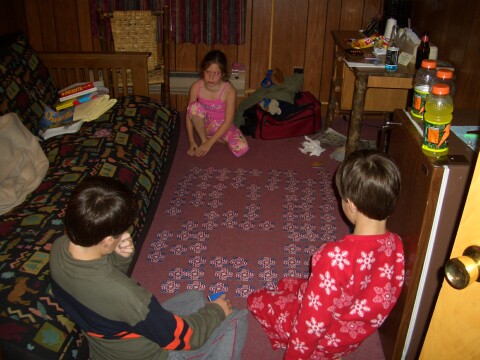
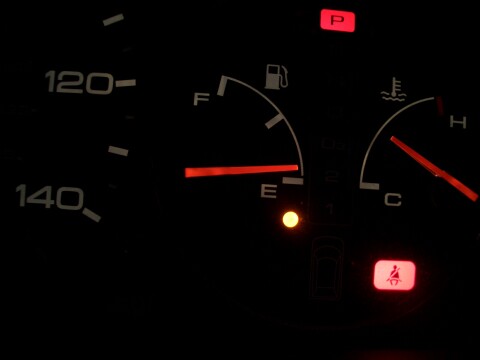
I calculated it would run out by 8 AM Monday morning.
So I woke up at 430 AM and drove back down the mountain an hour to the nearest open gas station.
So 2+ hours later the car was back on the Lodge.
That cost me $50 in gas and 1 nanosecond of time.
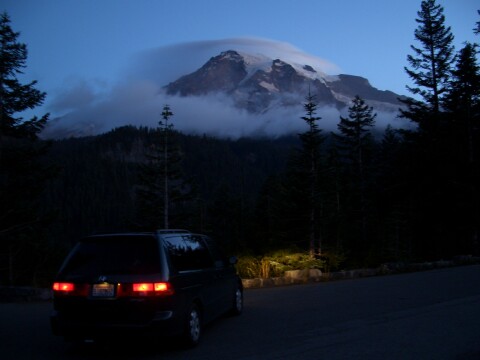
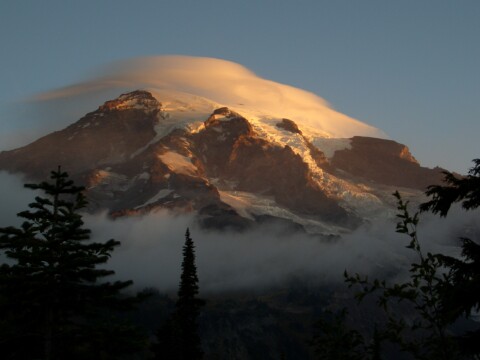
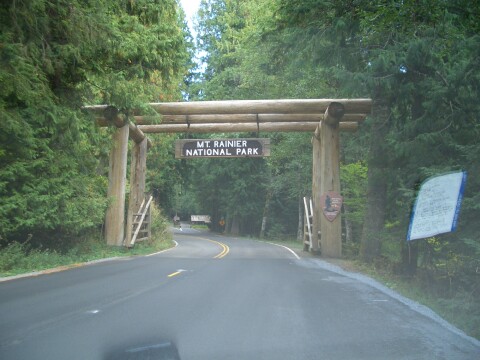
We stayed until I calculated we had a full 40 hours of exposure at mile-high elevation. I added a few extra hours to make up for lost time due to the unexpected gas trip.
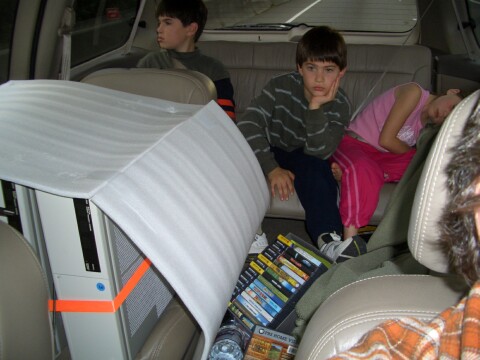
48 hours later, we were all tired and sick of the experiment.
Checking on the clocks every hour or so, day and night, I was most tired of all.
The only thing that kept me going was knowing that the experiment hadn't screwed up yet, and that within minutes of returning home we'd know if we saw time dilation or not.
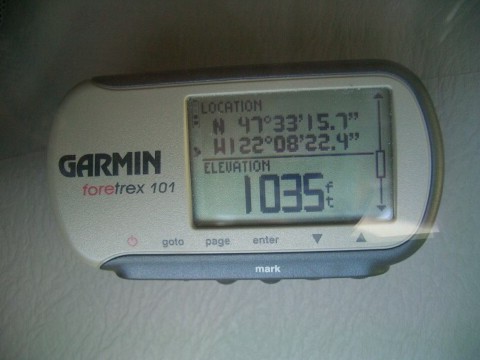
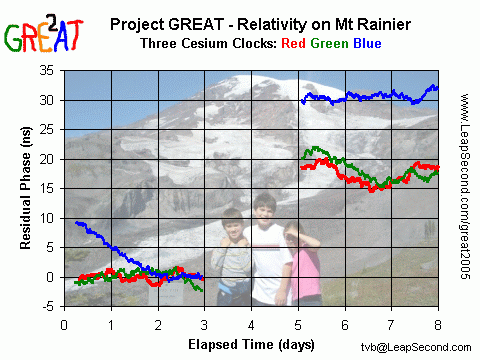
Amazingly, we did see time dilation.
Here's a final graph with 8 days of data. This represents 3 days pre-trip, the 2 day Mt Rainier trip, and 3 days post-trip.
You can see the blue clock was a little weird. Not sure what caused that yet.
But the time dilation was somewhere in the 20 to 30 ns range. The number we expected was 23 ns so I'm very pleased with the result.